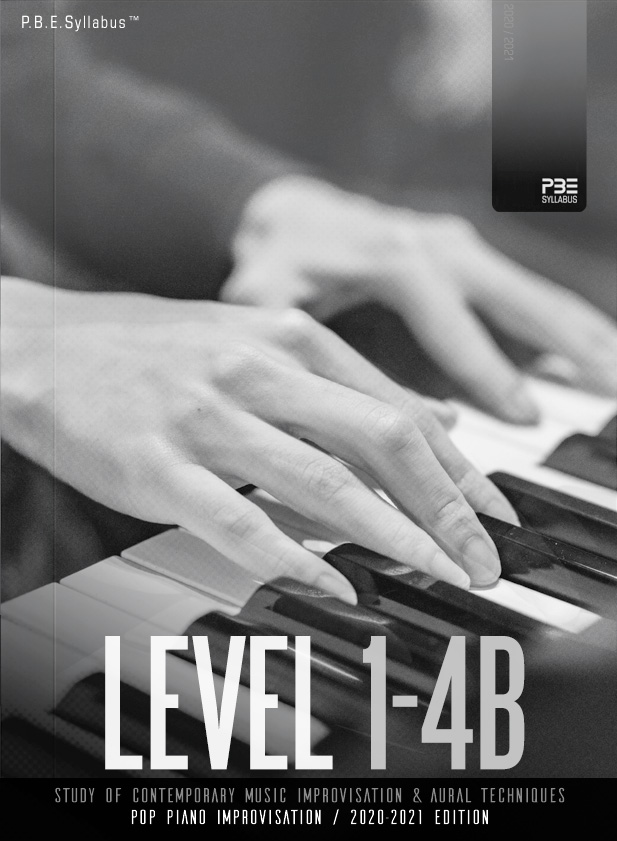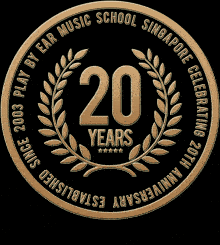Current P.B.E.S™ edition

Principal instruments: Pop Piano Improvisation P.B.E.S™ Level 1-4 (2020 – 2021)
Jazz Piano Improvisation P.B.E.S™ | Pop Vocal Improvisation P.B.E.S™ | Batch code V372-CSA22 | Authorised Institution for PBE Music School & PPM (Malaysia)
Play by Ear Syllabus™ (Study of Contemporary Music Improvisation & Aural Techniques – The teaching methodology)
Published in 2020 |
Official release date – 13 Nov 2019 Copyright © 2016 by PLAY BY EAR | UEN: 53028683A
Copyright © PLAY BY EAR | UEN: 53028683A
All rights reserved. The registered trademark Play By Ear Syllabus™, or P.B.E.S™, is an internationally copyrighted teaching methodology. No part of this P.B.E.S™ publication may be reproduced, distributed, or transmitted in any form or by any means, including photocopying, recording, or other electronic or mechanical methods, without the prior written permission of the publisher (Play by Ear UEN53028683A – Singapore), except in the case of brief quotations embodied in critical reviews and certain other noncommercial uses permitted by copyright law. For franchise opportunities, write to the publisher, addressed “Attention: Franchise Coordinator,” at the address – 245B Victoria Street Singapore 188032 The contents of this book are not available to the open public and the teaching methodology shall not be used by any unauthorized organizations or private educators. The book and its content is to be used solely by the authorized centres and institutions listed below:
PLAY BY EAR Singapore (Bugis Branch)
245B Victoria Street, Bugis Village, Singapore 188032
Tel: (+65) 63387939 | Email: info@play-by-ear.net
PLAY BY EAR Japan
PBE JAPAN 音楽教室|東京都品川区東品川(品川駅付近)
Tel: (+81) 03-4579-0240 | Email: info@play-by-ear.jp
Updates as of 2 April 2017
- New diagrams & variations for P.B.E.S™ Level 1 – Ending a song with C add9.
- Translations from English to Japanese for all subjects
- Pop Piano Improvisation: New keyboard and fingering diagrams for P.B.E.S™ Level 1, 2 and 3 added. New notation illustrations for subjects on Close & Wide playing techniques, 1+3+5, Broken + Block chord, Broken + Broken chord techniques added. New improvisation examples for subjects on Ending a song using chord progressions (IV-I), approached notes on left hand using scale mode.
- Close & Wide playing techniques using 1,3,4,5 and 1,2,3,5 for left hand are intended for P.B.E.S™ Level 3 and above (application for 16th beat or semi quaver rhythms)
- Level 1 (subject 1:10) using 1-5-8 as broken chords for both quarter note and quaver note rhythms. Applicable for only P.B.E.S™ Level 1 approved single note melody.
- Dotted rhythm and rock pattern (I & II subject 2:13 under 9th edition) are intended for P.B.E.S™ Level 3 and above (application for broken + block chord patterns) as illustrated in P.B.E.S™ Level 2 broken chord technique 2.
- Bossa Nova patterns are intended for P.B.E.S™ Level 3 and above (application for 16th beat or semi quaver rhythms)
- Jazz Piano Improvisation: More examples for ii-V-I Progressions under previous subject J:5. New illustrations for turnarounds and tritone substitutions added. New chord charts and notation examples for ‘walking bass in common Jazz fake sheets’ and ’12-bars Blues with extended Blues turnarounds and chord substitutions’
- Pop Guitar Improvisation: Added new guitar symbols (tablatures) and chord diagrams. New strumming patterns (I, II, III, IV) using up/down ‘stroke’ diagrams. Added new common pop/rock chord progressions.
- Pop Vocal Improvisation: Added new techniques on mixed voice and head voice. Pitching using major scales practise exercises on keyboard.
